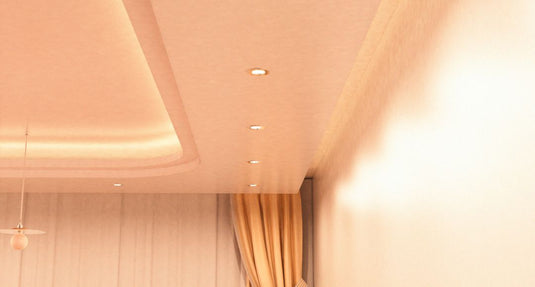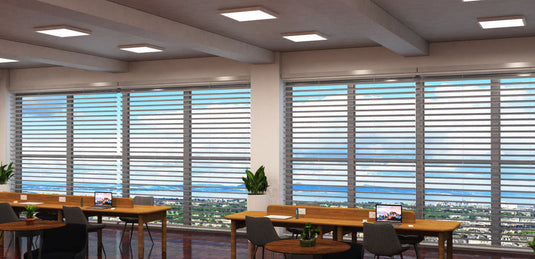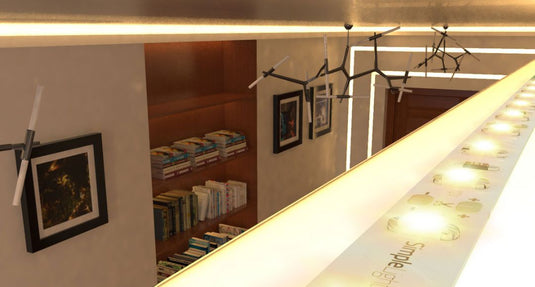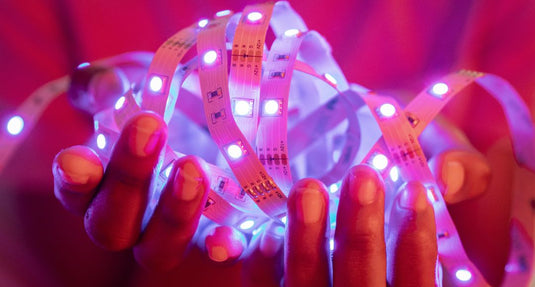Have you been using the same lighting system for years? Were they installed before the discovery of LED technology? If that’s the case, you may be spending more money than you should because of your lighting system!
The Need for Energy-Efficient Lighting Solutions
Updating your lighting system with energy-efficient lighting solutions has more benefits than expected. Yes, you have to consider the initial cost, especially for larger homes and facilitates. However, when you total all the savings you can earn over the years, you'll know it's a worth-it investment!
LED lighting is by far the most energy-efficient lighting solution available today. It can convert about 95% of the power into light, which is why it only requires a minimal amount to produce substantial brightness. Suppose you use LEDs in your home, office, or any establishment. In that case, even if your facilities require a significant amount of lighting, it won't cost as much compared to operating non-LED lighting fixtures.
Benefits of LED Lighting
Aside from its outstanding efficiency level, LED lighting has more benefits than you expect. Here are some that you can expect when you upgrade to LEDs!
Energy Efficiency
Energy efficiency is the most immediate benefit you'll get when you begin using LED lighting. When you purchase an LED bulb, you'll see a lower wattage requirement compared to an incandescent bulb. You'll know that your power consumption over the month will be less once you use LED lighting.
Long Lifespan
Typically, an LED fixture can last about 20,000 – 50,000 hours. However, depending on your use, the LED fixture can last longer. In addition, LED lights don't suddenly die out. It depreciates in brightness (lumens depreciation) until it's already too dim to utilise.
Cost Savings
Since LED lighting is energy efficient, you'll earn savings from your electrical expenses. Aside from that, they're long-lasting. Therefore, you'll also have reserves from your maintenance cost. Yes, you did spend on the initial cost of the upgrade, but through these savings, you'll be able to get a return on investment!
Colour Temperature Options
LED lights have colour temperature options, allowing your lighting system to be fuller and more diverse. The most common colour temperatures are cool white (6000K), natural white (4000K) and warm white (2700K) light. Cool white and natural white light is suitable for task lighting, while warm white light is ideal for ambient lighting.
Dimming Capabilities
Most LED lights are dimmable from 0 – 100%. Because of this, you get complete control over the brightness level of your fixture. Aside from that, having dimmable fittings will enable you to improve the efficiency of the light since you're not constantly using it to its max capacity.
Types of LED Lighting
LED lighting has various forms, types, shapes, colours, and specialisations. Here are some you can typically find!
- LED Bulbs – Mostly seen in residential properties as ceiling lighting, LED light bulbs come in various shapes (globe, can, candlelight), sizes, bases, and colours. You can use it with many lighting fixtures, including pendant lamps, desk lamps, table lamps, and more!
- LED Tubes – These fixtures are mainly applied in commercial spaces, but you can still incorporate them in your home. It is a linear bulb that varies in length, colour temperatures, diameter and more.
- LED Downlights – This type of LED lighting is recessed into the ceiling and is usually seen in modern homes. You either pair it with a GU10 bulb, or it already comes with one. LED downlights vary in type, colour, temperature, materials, size, and more!
- LED Strip Light – This is a ribbon-like lighting with LED chips on one side and an adhesive backing on the other. It’s versatile and is available in different colours, lengths, functions, etc.
Considerations for Making the Switch to LED Lighting
Switching to LED lighting is easy to say. However, there are some things that you must consider before doing so. There are different types and technicalities that you need to think about so you can maximise your gain.
Compatibility with Existing Fixtures
Even in a standard-sized home, you'll still find several lighting fixtures installed. If you don't have the budget to upgrade everything in one go, you must strategise to efficiently utilise your funds. One of the things that you can do is check the compatibility of your existing fixtures with LEDs.
You don't need to replace the entire unit if they are compatible or can fit an LED bulb. You can change the bulbs first. Later, when you can pool your money again, you can consider replacing the fixture.
You need to consult an electrician to know if the existing fixtures are LED-compatible. Yes, you'll be paying for their service, but at least you're 100% sure and confident that your upgrade will not cause any trouble.
Dimming Requirement
If your existing wall dimmer is incompatible with an LED fixture, it will flicker and cause damage to your lights. If you want that smooth transition from bright to dim, you should also install an LED-compatible wall dimmer.
Aside from a wall dimmer, you can also use other devices to manage the brightness level of your LEDs. You can pair it with smart speakers like Alexa or Google Home or utilise a remote control.
Colour Temperature Preferences
As mentioned before, LED lights are available in different colour temperatures. For areas where you rest, like the living room or bedroom, using a warm white colour is preferable. On the other hand, for places where you must focus and be productive, it's ideal to incorporate cool white or natural white light!
Retrofitting Options
Naturally, you would not want to throw away your vintage lamps and unique lighting fixtures even if they're not made with LEDs. For these instances, you can consider LED retrofitting. If you want to try this option, ensure that you do your research and evaluate the prices of different companies before sealing the deal.
Retrofitting is a cost-effective alternative to redoing your entire lighting system. In doing this, your current lighting system will be able to produce the best results but at an affordable price.

Installation Process of LED Lighting
Depending on the fixture that you have, the installation process will differ. You need to read through the instruction manual and follow the steps precisely. If you don't have any experience with lighting installations, it's better to contact an electrician to do the mounting for you. This way, you're safe, and your lights are correctly installed.
To prepare you for the installation, should you choose to do it yourself, here are some reminders you must remember!
- Planning and Measuring – Don't dive into an installation procedure without planning and measuring. You don't want to wing it because placement is necessary to guarantee that your space will have an even distribution of illumination and not be covered with shadows. Also, not measuring anything is a mistake, especially if you need to trim cut-out holes. If you don't get it right, your fixtures will fall off.
- Wiring and Power Source – During the planning stage, you must consider the wiring path of your lights. You don't want it out in the open and easy to reach by curious children. Also, locate all the possible power sources before making any permanent holes or trims. If possible, consider going for those nearest the area where you'll add a fixture.
- Mounting and Attaching Lights – The manner of mounting and attaching lights varies depending on your lighting type. LED strip lights can just stick directly to the surface, while downlights need a hole to sit flush against the ceiling. Review the installation instructions so you won't have a hard time.
Maintaining LED Lighting
Although LED lights can last a long time, they sometimes do not last as long as you expect because of poor maintenance. So, here are some maintenance tips that you should not forget!
- Cleaning and Maintenance – Always clean your fixtures to ensure that all the illumination produced is delivered to the surfaces below. Also, occasionally check if your LED lighting needs a new bulb, if the connections are becoming loose, etc.
- Replacement and Considerations – If it's time to say goodbye to your LED lighting, consider looking for even more energy-efficient replacements. When your LED bulb requires a changeover, an even more efficient LED lighting solution may have come out, so contemplate upgrading.
Conclusion
LED lighting is a growing industry because of the endless benefits and possibilities it can bring. It's efficient, long-lasting, low maintenance, and eco-friendly. So, if you're looking for a place to get one, visit our website, LED Supplier. We have a wide selection of indoor, outdoor, and commercial LED lighting!




